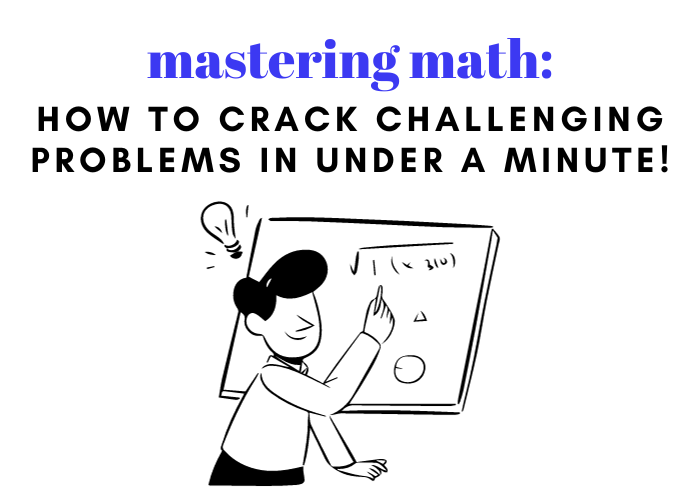

Last Updated on August 3, 2023
The ladder method is a useful way to help students understand and solve math problems in less time.
But even though this is a helpful tool that tutors and teachers use in classrooms today, we know that many parents may not have been taught math with the same method. If you’re a parent that wants to understand the ladder method so that you can help your child with their homework, stick with us.
We are about to break this technique down into a step-by-step guide that is easy to understand and start using today.
And that means more time for additional math worksheets and learning!
It is a simple technique that uses prime numbers and visualization in the form of staggering lines (in a way that looks like a ladder) to help students understand math problems. It requires students to show their work, but helps them clearly see how to arrive at a given solution.
So, the first step is defining and identifying prime numbers. You may remember from your days in the classroom, but prime numbers are those that are greater than 1 and have no positive divisors other than 1 and itself.
This means that the only way to get a prime number via multiplication is by using the number itself.
For example, here are the first eight prime numbers: 2, 3, 5, 7, 11, 13, 17, and 19.
Let’s look at the number 7. You cannot multiply any numbers other than 7 and 1 to get seven, so it’s a prime number.
What about number 6?
You can multiply 2 x 3 to get 6, and 6 x 1 also equals 6. So it is not a prime number.
The ladder method can be used to solve several different math problems. We’ll start with the easiest and work our way to the harder stuff so you can help your child through any areas that may be giving them trouble.
Let’s say you want to find the prime factorization of a single number. For this example, we’ll use the number 24.
Write down the number 24 in brackets. Then, think about the lowest prime number that it can be divided by with no remainders.
| 24 |
The best way to do this is to recall the list of prime numbers and start with the lowest number first (other than 1).
Does 2 go into 24? The answer is yes.
So, you’ll write 2 on the left side of the brackets, just like we’ve done here.
2 | 24 |
Next, you’ll need to figure out how many times 2 evenly goes into 24 by diving 24/2.
You’ll start the next rung of your ladder below the first line by writing the answer like this:
2 | 24 |
| 12 |
Ask, “Is 12 a prime number?”
Since we know a number of combinations can be multiplied to reach 12 (like 3 x 4), we know 12 is not a prime number. The goal is to break apart each rung and bracket to get a prime number.
So, start the process again with the smallest prime number and work your way up. Does 2 evenly go into 12? How many times?
Write the prime number (2) to the left of the bracket and start another rung of the ladder for the next divisor.
2 | 24 |
2 | 12 |
| 6 |
Now move to the lowest rung that you just added. Ask if 6 is a prime number. We know again that our number is divisible by 2.
So, we will again put the prime number (2) to the outside of the bracket and begin a fourth rung.
2 | 24 |
2 | 12 |
2 | 6 |
| 3 |
Now we finally have a prime number in our bottom rung. Since there are no numbers that can be multiplied to reach 3 other than 1 and 3, we’re at the end of the ladder.
The prime factorization of 24 is then expressed as all the numbers on the outside of the ladder, or in the “L shape:”
2 | 24 |
2 | 12 |
2 | 6 |
| 3 |
That means the prime factorization of 24 is: 2 x 2 x 2 x 3. Which can be written as 23 x 3.
When you have a fraction like 24/36 and you need to simplify, you’ll use the ladder method just like in the example above. To account for both numbers, you will simply add another column.
Identify both the numerator (the number on top of the fraction) and the denominator (the number on the bottom), putting them in separate columns:
N D
| 24 | 36 |
Using the ladder Method, think about the smallest prime number that will go into both 24 and 36.
When your child answers “2”, ask them how many times 2 goes into both 24 and 36. You’ll write the answers in the separate rungs below the numbers.
This is how the first two rungs of the ladder should look at this point:
2 | 24 | 36 |
2 | 12 | 18 |
Repeat the process for the next two numbers, which are also divisible by 2:
2 | 24 | 36 |
2 | 12 | 18 |
| 6 | 9 |
Now we have the numbers 6 and 9.
When we start with the lowest prime number, 2, we notice that it goes evenly into 6, but not 9. That means we can’t use it. So, you must move to the next prime number.
Does 3 go into both numbers evenly?
If you divide 6 by 3, we get 2; a nice even number. And you can divide 9 by 3 and to get 3, a prime number. So we’ll add another rung to the ladder.
N D
2 | 24 | 36 |
2 | 12 | 18 |
3 | 6 | 9 |
2 3
At this point, you’ve reached a prime number and will not be able to add any more rungs. So we’ll revisit the original problem: how to simplify the fraction 24/36 .
The correct answer is in the bottom rung of the ladder: 2/3
Easy peasy, right?
Since we’ve already done all this math, let’s use this same example to find the greatest common factor and the least common multiple.
The greatest common factor (GCF) is the largest number that divides evenly into all of the numbers you’re comparing.
It’s easy to find the GCF using the ladder method because all you have to do is look at the factors of each number on the left side of the ladder and multiply them.
Can you find the greatest common factor in the example below?
N D
2 | 24 | 36 |
2 | 12 | 18 |
3 | 6 | 9 |
2 3
If you answered 12, you are correct because 2 x 2 x 3 = 12.
That means no other number higher than 12 can be divided evenly into both 24 and 36.
The lowest common multiple (LCM) is the smallest multiple two (or more) numbers share.
To begin with this exercise, we’ll do a quick refresh on multiples. You can find a multiple of a number by simply multiplying it by another number. The best way to do this is to work up from number 1.
Here’s an example:
4 x 1 = 4
4 x 2 = 8
4 x 3 = 12
We can then list the multiples of 4: 4, 8, 12, 16, 20, 24, 28, 32, 36, 40, 44, etc.
Different numbers can have common multiples, too. You can find these by writing out the multiples of each number and looking for common answers:
Multiples of 4: 4, 8, 12, 16, 20, 24, 28, 32, 36, 40, 44…
Multiples of 5: 5, 10, 15, 20, 25, 30, 35, 40, 45…
For example, multiples of 4 and 5 are 20 and 40. And the LCM is 20.
But how would you find all the multiples of two bigger numbers, such as 24 and 36, and quickly find the LCM?
This is one of the really useful ways to use the ladder method. To show you how to do this, we’ll use the ladder we built above with 24 and 36.
Then, you’ll simply multiply all the numbers that form an “L” on the left side of the ladder.
2 | 24 | 36 |
2 | 12 | 18 |
3 | 6 | 9 |
| 2 | 3 |
So the LCM is found with the following equation: 2 x 2 x 3 x 2 x 3 = 72.
This is a much easier way to find the solution than identifying all the individual multiples of these numbers!
Let’s say your child has to add the fractions 1/6 and 3/8.
You must first remember that, before you can add or subtract fractions, the denominators must be the same. We can do this by creating a two-column ladder for the denominators, as such:
D D
| 6 | 8 |
We’ll repeat the ladder method process of finding the smallest prime number that divides evenly into both. In this case, it’s 2.
D D
2 | 6 | 8 |
How many times does 2 go into both 6 and 8?
D D
2 | 6 | 8 |
| 3 | 4 |
Looking at the next rung, does 2 go into both 3 and 4?
Nope.
What about 3? Again, no.
Since we can’t find any more prime factors, we’re left with 3 and 4. Since these numbers are not the same, we can find the LCM in order to make sure both fractions have the same denominator.
Let’s find our LCM by multiplying all the numbers in the “L shape” again:
D D
2 | 6 | 8 |
3 4
Multiply 2 x 3 x 4 and you’ll get 24.
This number is the lowest common multiple between our two denominators. That means all we have to do is get both fractions to have 24 as their common bottom number.
Luckily, we already have the numbers to help us do that.
We’ll take our original fractions and multiply them by the numbers sitting in the bottom rung of our ladder, in this case, 3 and 4. This should result in both fractions having the LCM as a denominator.
Here’s how we did that:
1 x (4) + 3 x (3) = 4 + 9
6 x (4) 8 x (3) 24 24
Now that the denominators match, we can add up the numerators. The sum becomes 13/24.
Let’s take a look at the distributive property in math that says that ab + ac = a(b+c).
For our example, we will use the equation 18 + 24 = 42. To demonstrate the distributive property, let’s put these two numbers into a ladder rung:
| 18 | 24 |
Follow the process you’ve learned for identifying prime numbers and building rungs on the ladder:
2 | 18 | 24 |
3 | 9 | 12 |
| 3 | 4 |
Now can fill in the equation a(b+c) using the numbers in our ladder.
2 | 18 | 24 |
3 | 9 | 12 |
| 3 | 4 |
We’ll multiply the outside left numbers to get “a.”
Then we’ll use the bottom rung of the ladder for the numbers inside the parenthesis (b+c).
The equation should look like this: a(b+c) = 6(3 + 4)
But can we check that just to be sure? Absolutely!
You can use the distributive property to distribute (or multiply) the 6 individually to the 3 and 4 inside the parenthesis:
a(b+c) = 6(3 + 4)
6 x 3 = 18
6 x 4 = 24
18 + 24 = 42.
Or, you can go the other way and add the inside of the parenthesis (3+4), which equals 7, and then multiply that by 6 to get 42.
Either way, it checks out!
But what about more difficult expressions with variables like 42x – 56?
Take a deep breath and just use the same method we’ve been practicing. Start with your top ladder rung:
| 42x | 56 |
Then find the smallest prime number each number is divisible by. In this case, 2:
2 | 42x | 56 |
| 21x | 28 |
And keep going. The highest prime number these two numbers will be divisible by is 7.
2 | 42x | 56 |
7 | 21x | 28 |
| 3x | 4 |
Similar to our previous example, we’re going to use the numbers in our ladder to fill in the expression.
Multiply the outside numbers (2 x 7 = 14) and add the product to your expression first.
Then, use the numbers from the bottom rung to fill in the rest of the expression.
2 | 42x | 56 |
7 | 21x | 28 |
| 3x | 4 |
So our original expression, 42x – 56, is now expressed as 14 (3x – 4).
See? Next time your child brings home a math problem that uses the ladder method, you can now help them with confidence.
However, if you don’t have time to go over all the answers, working with an online math tutor can ensure your child is building their knowledge and learning the techniques they need to succeed.
Get started with a Thinkster Math Tutor today, and gain access to thousands of digital math worksheets and start building your child’s confidence right now.
If you can learn a whole new method like this in just one blog post, imagine how much your child will excel with a dedicated Thinkster online math tutor on their team.


